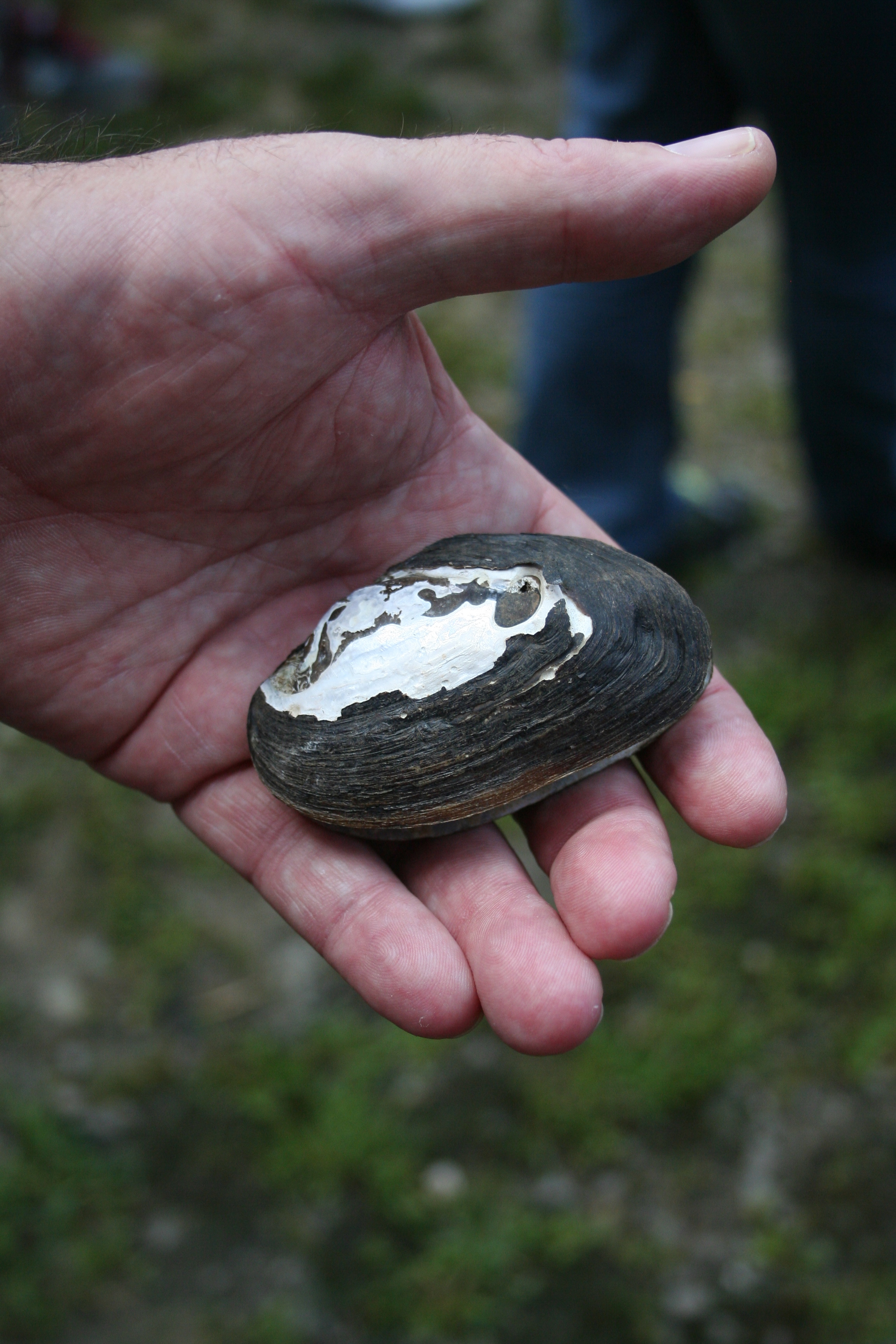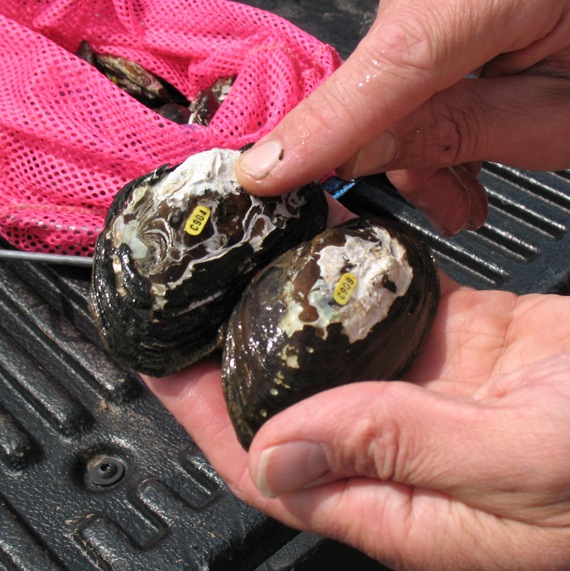Watersheds have many unsung heroes. One of those heroes is the mighty freshwater mussel, a tiny creature with the capacity to provide significant water quality benefits. Despite their importance to natural aquatic ecosystems, mussels are among the most imperiled animals in both the Delaware River Basin and the nation as a whole. Their decline in (and in some cases, disappearance from) our waterways has prompted the Partnership for the Delaware Estuary to launch a Freshwater Mussel Recovery Program (FMRP), with efforts targeted in the White Clay Creek watershed.
Freshwater mussels are long-lived, bivalve creatures that once thrived in many of the major streams in northern Delaware and into Pennsylvania. Twelve species of freshwater mussels are considered native to the White Clay Creek region, and at least four of these species could still be found in the upper reaches of the Creek as recently as the early 1900s. These animals require a fish host during the early stages of their lives, which makes the presence of mussels in a stream a powerful indicator of healthy aquatic conditions.
Mussels don’t just indicate good water quality, though; they actually contribute to it. According to the Partnership for the Delaware Estuary (PDE), a nonprofit organization dedicated to protecting the health and integrity of the Delaware Estuary ecosystem, a single adult mussel can filter suspended sediment and pollution from up to 15 gallons of stream water per day! In the neighboring Brandywine Creek watershed, surviving mussel populations filter out as much as 25 tons of suspended pollution every year. That's equivalent to about 3 dump trucks full of dirt!
Unfortunately, all across the country mussel populations are in jeopardy, and the Christina River Basin is no exception. In the past decade, only one species of freshwater mussel has been found above the tide line in Wilmington. According to PDE, reasons for the decline are numerous, and may include overall impaired water quality from changing land uses, overharvesting and predation, and the loss of the species of fish that mussels rely on as hosts, and dams that block fish passage.
To help bring freshwater mussels back to their native waters, PDE has implemented a Freshwater Mussel Recovery Program in the Delaware portion of the White Clay Creek. This program is funded in part by the Delaware State Tax Check-Off (also known as the White Clay Creek Restoration Fund). The first step in this initiative was to survey the streams in the watershed to search for existing mussel populations. This surveying, completed in May 2013, spanned more than 4,000 stream meters and took roughly 20 person hours to complete. Unfortunately, the researchers came back empty handed with no mussels found in the non-tidal portions of the creek in Delaware.
The good news, though, is that this isn’t where the story ends for freshwater mussels. Phase II of PDEs recovery initiative involves transplanting about 200 healthy adult mussels from the Brandywine Creek to carefully selected areas within the Delaware portion of the White Clay Creek. These mussels were reintroduced during the summer of 2013 and each mussel was electronically tagged so that they can be easily located and studied over the following year to measure the success of the reintroduction. Whether these species can withstand the erosive forces of excessive stormwater and flooding, as well as the pollutants carried in stormwater runoff, remains to be seen. Success or failure aside, information derived from this study will benefit future freshwater mussel restoration efforts.
PDEs Freshwater Mussel Recovery Program is an exciting initiative for the White Clay Creek watershed. Not only will restoring mussel populations contribute to local biodiversity and water quality improvements, it will also help add a bit more “wild” to this already Wild and Scenic River.
Freshwater Mussels Update 2014
For more information, visit the PDE website at: http://www.delawareestuary.org/freshwater-mussels.
Help search the White Clay for existing mussel populations. Learn more about volunteer opportunities here.




